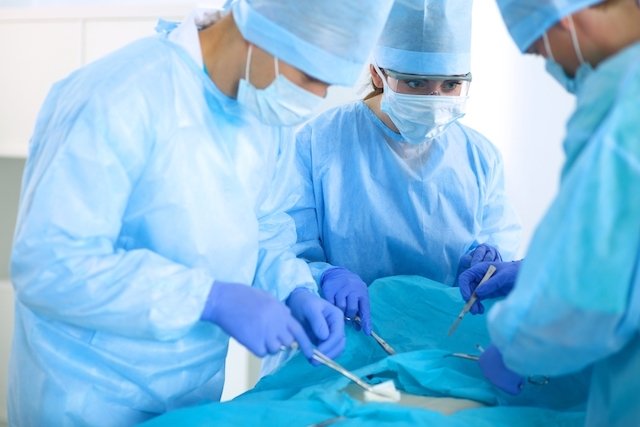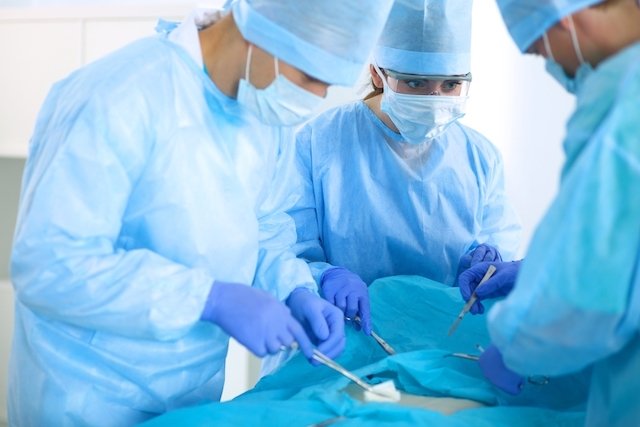Surgery for endometriosis is recommended for women who are infertile or who do not wish to have children, as in more serious cases it may be necessary to remove the ovaries or uterus, directly affecting the woman’s fertility. Thus, surgery is always advised in cases of deep endometriosis in which treatment with hormones does not produce any results and there is a risk to life.
Surgery for endometriosis is performed in most cases using laparoscopy, which consists of making small holes in the abdomen to insert instruments that allow the removal or burning of endometrial tissue that is damaging other organs such as the ovaries, the outer region of the uterus, bladder or intestines. .
In cases of mild endometriosis, although it is rare, surgery can also be used together with other types of treatment to increase fertility by destroying small pockets of endometrial tissue that are growing outside the uterus and making pregnancy difficult.

When is it indicated
Surgery for endometriosis is indicated when a woman presents severe symptoms that can directly interfere with the woman’s quality of life, when treatment with medication is not sufficient or when other changes are observed in the endometrium or the woman’s reproductive system as a whole.
Types of Endometriosis Surgery
Depending on the age and severity of endometriosis, the doctor may choose to perform conservative or definitive surgery:
- Conservative surgery: aims to preserve women’s fertility, being carried out more frequently on women of reproductive age and who wish to have children. In this type of surgery, only the endometriosis foci and adhesions are removed;
- Definitive surgery: it is indicated when treatment with medication or conservative surgery is not sufficient, and it is often necessary to remove the uterus and/or ovaries, when there are large foci of endometriosis.
Conservative surgery is normally performed through videolaparoscopy, which is a simple procedure that must be carried out under general anesthesia, in which small holes or cuts are made near the navel that allow the entry of a small tube with a microcamera and instruments. doctors who allow the removal of endometriosis foci.
In the case of definitive surgery, the procedure is known as hysterectomy and is performed with the aim of removing the uterus and associated structures according to the extent of endometriosis. The type of hysterectomy to be performed by the doctor varies according to the severity of the endometriosis. Discover other ways to treat endometriosis.
Possible risks of surgery
The risks of surgery for endometriosis are mainly related to general anesthesia and, therefore, when the woman is not allergic to any type of medication, the risks are generally quite reduced. Additionally, as with any surgery, there is a risk of developing infection.
Therefore, it is recommended to go to the emergency room when a fever above 38º C appears, very severe pain appears at the surgery site, swelling appears at the stitch site or there is increased redness at the surgery site.
Recovery after surgery
Surgery for endometriosis is carried out under general anesthesia in a hospital and, therefore, it is necessary to stay in the hospital for at least 24 hours to assess whether there is any bleeding and to fully recover from the effect of the anesthesia, however it may be necessary to stay longer length of stay if a hysterectomy was performed.
Although the hospital stay is not long, the time for complete recovery after endometriosis surgery can vary between 14 days and 1 month and during this period it is recommended:
- Staying in a nursing homenot being necessary to remain constantly in bed;
- Avoid excessive efforts how to work, clean the house or lift objects heavier than one kilogram;
- Not doing physical exercise during the first month after surgery;
- Avoid sexual intercourse during the first 2 weeks.
Furthermore, it is important to eat a light and balanced diet, as well as drinking around 1.5 liters of water per day to speed up recovery. During the recovery period it may be necessary to make regular appointments with the gynecologist to check the progress of the surgery and evaluate the results of the surgery.
See the following video with Dr Maurício Abrão for more details about the treatment of endometriosis, symptoms and how to confirm the disease:
Bibliography
- ESHRE. Information for women with endometriosis – Patient version of the ESHRE Guideline on management of women with endometriosis. 2014. Disponível em: <https://www.eshre.eu/-/media/sitecore-files/Guidelines/Endometriosis/ESHRE-ENDOMETRIOSIS-GUIDELINE_Patient-version_FINAL.pdf?la=en&hash=52A8A838A070CAF508B43C65DE5D0BEEF1B8438F>. Acesso em 09 out 2019
- CLINICAL PROTOCOLS AND THERAPEUTIC GUIDELINES – MINISTRY OF HEALTH. Endometriosis. 2010. Available at: <https://portalarquivos2.saude.gov.br/images/pdf/2014/abril/02/pcdt-endometriose-rectificado-livro-2010.pdf>. Accessed on October 9, 2019

Sign up for our newsletter and stay up to date with exclusive news
that can transform your routine!
Warning: Undefined array key "title" in /home/storelat/public_html/wp-content/plugins/link-whisper-premium/templates/frontend/related-posts.php on line 12
Warning: Undefined array key "title_tag" in /home/storelat/public_html/wp-content/plugins/link-whisper-premium/templates/frontend/related-posts.php on line 13





